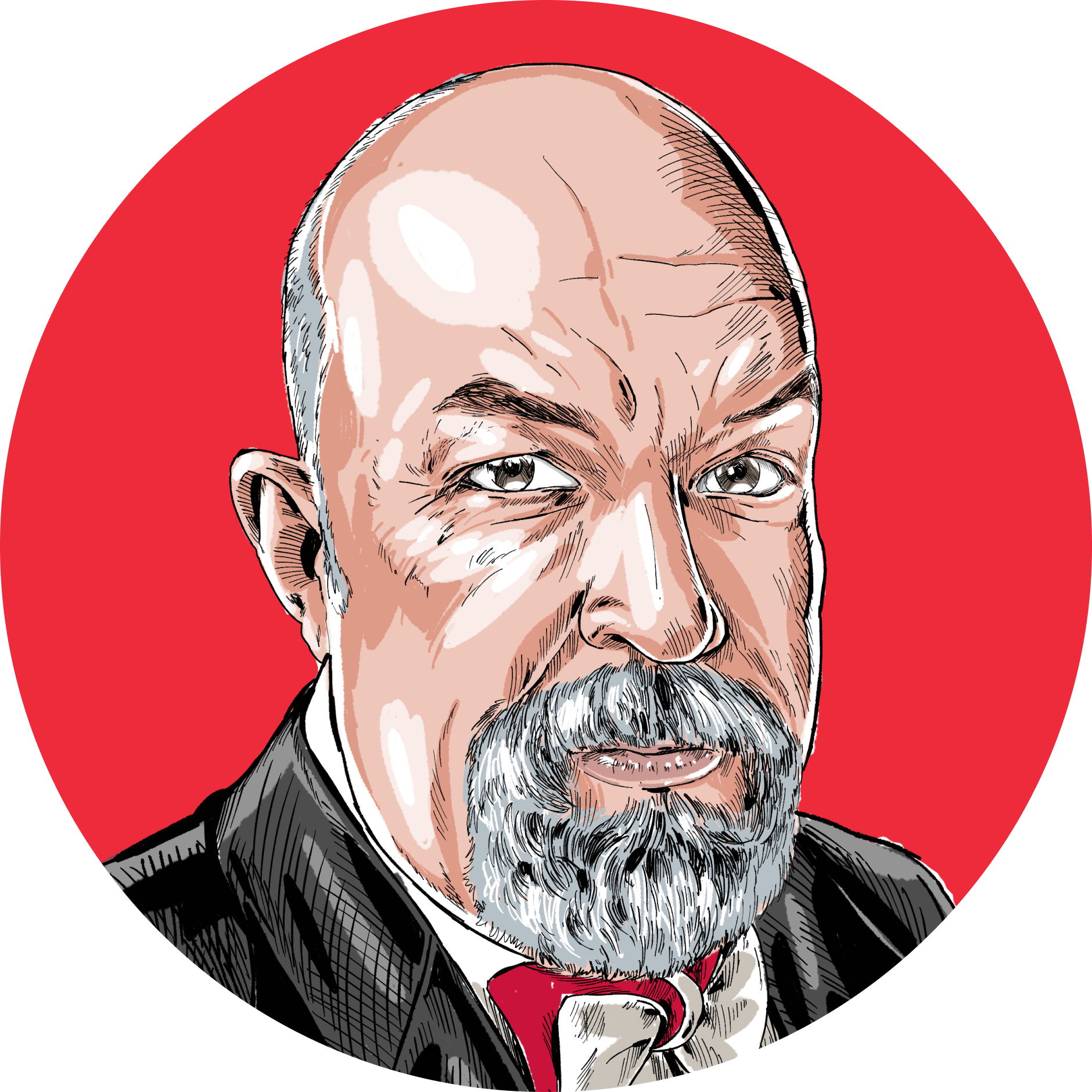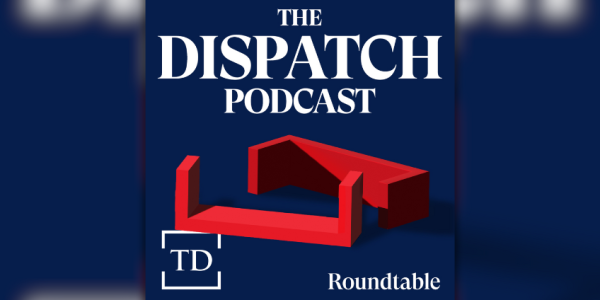This being the United States of America, a horrifying number of people have been killed in the past few weeks in mass shootings carried out by lunatics of varying descriptions. In response, President Joe Biden, who has never in the course of his 80 long years on this Earth suffered the invasion of his mind by an original thought, has responded the way he always responds: by calling for a certainly unconstitutional ban on so-called assault weapons. He did this after the massacre at the Walmart in Chesapeake, Virginia, in which there was no “assault weapon” involved—the killer used an ordinary 9mm handgun—but such details do not interest President Biden. All he needs is the familiar enemy, in this case U.S. firearms manufacturers and their detestable quest to make money in business. Of course, in the Colorado Springs nightclub shooting, there doesn’t seem to have been any firearms manufacturer involved, either—that killer used homemade firearms, according to press reports.
But none of that matters, because the gun-control debate is not about guns: It is simply another front in the culture war, oriented not toward the criminal misuse of guns—about which our federal, state, and municipal governments do approximately squat—but about the kind of people who tend to own guns, or at least the gun-owning villains of the progressive mind.
Let me briefly address the legal and practical questions involved in Biden’s proposed assault-weapons ban. The Bill of Rights protects the right of Americans to own those firearms that are “in common use at the time,” a right confirmed by the Supreme Court. The Colorado Springs shooter seems to have used an AR-style rifle made from mail-order parts, while the Virginia shooter used a 9mm handgun—and if there is any standard for firearms “in common use at the time,” these weapons must surely define it: They are almost certainly the most common type of rifle and most common type of handgun owned by private citizens in the United States. Trying to ban them would be plainly unconstitutional, and it would also be pointless: All long guns together—meaning AR-style rifles, non-AR rifles, shotguns, etc.—account for a vanishingly small share of all homicides, typically something around 3 or 4 percent.
There isn’t anything especially dangerous about AR-type rifles: Most of them are chambered for the modestly powered 5.56mm cartridge, which is a good deal less potent than the rounds used in the typical deer rifle, and they fire at the same rate as any other semiautomatic weapon or a revolver: one round fired for every pull of the trigger. The basic AR assembly (which is far from unique to AR-type rifles) of a semiautomatic firing mechanism paired with a detachable box magazine describes the great majority of modern rifles and practically all modern handguns. (There are a few of us old revolver enthusiasts left.) These are not special guns—they are simply guns.
For years, the most common firearm used in a murder in the United States has been whatever the most common handgun is at any given moment: Once upon a time, it was cap-and-ball revolvers, and then it was .38 Specials, and now it is 9mm semiautomatics. Semiautomatics are faster to reload than revolvers, but the familiar American madman—these people are a distinct type—is perfectly capable of murdering men, women, and children with whatever is at hand: The worst school massacre in U.S. history happened at Bath, Michigan, in 1927 and didn’t involve any firearms at all. The deadliest act of domestic terrorism in U.S. history didn’t involve any firearms. In a typical year, more Americans die from literal arms—the kind with fists at the end of them—than from so-called assault weapons: In the most recent FBI crime statistics, there were more people beaten to death with the assailant’s bare hands (597) than killed with all rifles combined (364). Twice as many Americans were beaten to death with hammers, rocks, and other blunt objects (397) in 2019 than were killed with all shotguns combined (200). We are a violent people and always have been.
As I have reported at some length in earlier columns (and I’ll do another roundup for The Dispatch in the near future), we do very little to interfere with violent criminals, and almost nothing to stop them from acquiring and using firearms, before the point at which a criminal’s career escalates to murder. In many big cities—big, Democrat-run cities, note—the number of gun cases that are simply dismissed is a multiple of the cases that result in successful prosecution, and the numbers are moving in the wrong direction: As late as 2016, only about 30 percent of gun cases were just dismissed without prosecution in Philadelphia, but by 2021 that figure had more than doubled to 61 percent—and the Philly DA was bragging about the fact.
These killers don’t come out of nowhere: The Walmart shooter was a clearly disturbed man, and the Club Q shooter recently had been arrested in a bomb-threat case. In case after case after case, we learn that the killers in these mass shootings were well-known to police and mental-health authorities. And it’s even worse when it comes to ordinary crime: Prisoners in custody of the state penal systems have an average of 10 arrests and five prior convictions on their résumés before they are put away. Every year, a non-trivial number of Americans violate federal law by lying on background-check forms (as Hunter Biden seems to have done) but very few are ever prosecuted; every year, the federal background-check system wrongly allows a number of illegal gun sales to proceed, putting firearms into the hands of felons, people under domestic-abuse protection orders, mentally ill people, etc. In most cases the people in charge of enforcing the gun laws don’t even go around to collect the illegally purchased weapons once the mistake is discovered.
In case you were wondering what I meant by “approximately squat” above, that’s it.
Almost all of the proposals put forward by figures such as Joe Biden target federally licensed firearms dealers and the people who do business with them, who are, by definition, among the most law-abiding people in the United States. Almost none of the convicted criminals in this country who are in possession of a firearm at the time they commit their crimes acquire those firearms through gun stores or through gun shows. The share of criminals who do so amounts to less than 1 percent of all criminals in custody. But gun shops are easy to police—they have business hours, records, fixed addresses, federal licenses, etc.—and the people who do business with them are kulturkampf hate-totems for Democrats. And so we focus much of our attention on law-abiding recreational shooters and collectors who do business with licensed retailers and relatively little on actual criminals: In Chicago, the U.S. attorney’s office for years maintained a publicly stated policy of refusing to prosecute straw-buyer cases—in which someone purchases a weapon on behalf of someone who is legally prohibited from doing so—unless they were part of a grander, more career-enhancing organized-crime investigation. Ironically, a habitual criminal on the streets of one of our bloody cities probably has a better chance of being shot than he does of seeing the inside of a prison cell for using a gun to commit a crime short of murder.
We have a lot of guns in this country. Those aren’t going away. We have a Bill of Rights in this country, too, and that isn’t going away, either. We have three choices: 1. Get serious about gun-related crimes short of murder; 2. Pretend that this is all about middle-aged Bubbas who like to shoot scary black rifles; 3. Do nothing. As far as I can tell, it looks like we’ve settled on a combination of 2 and 3—and that is grotesquely irresponsible.
Given that so many important Democratic constituencies have long held a hostile view of law enforcement, you’d think that telling a bunch of cops and prosecutors to get off their asses and do their jobs wouldn’t be a very hard sell for politicians such as President Biden or big-city mayors. But these are government employees we are talking about, and the Democratic Party is nothing if not the party of government employees. And that is why, against all reason and evidence, the crosshairs are on Bubba rather than on violent criminals and their criminal enablers.
Economics for English Majors: National Debt
Why do we care so much about the national debt?
For many years, progressives argued that the national debt was mostly a phony issue, a culture-war battle dressed up as economic policy: The real issue, they argued, was that (overwhelmingly white) conservatives generally hated the welfare state and personally hated its (disproportionately nonwhite) beneficiaries, regarding them as lazy and ungrateful idlers and malcontents who would not work and sought to drift by on tax-funded benefits to which they had no genuine entitlement. Conservatives, this line of argument went, didn’t hate debt—they hated taxes and poor people, especially the black and brown ones living in big, Democrat-run cities.
There was some truth in that criticism, though a good deal less than many progressives imagined. In reality, the dread of debt goes back to this country’s Anglo-Protestant roots, and the Puritan tradition in particular. Our English cousins once had a famous fear of debt—think of Charles Dickens’ prescription: “Annual income twenty pounds, annual expenditure nineteen nineteen and six, result happiness. Annual income twenty pounds, annual expenditure twenty pounds ought and six, result misery”—but it was the “first American,” Benjamin Franklin, who best gave voice to the national obsession with debt and thrift in his many maxims: “Rather go to bed without dinner than to rise in debt. If you would be wealthy, think of saving as well as getting. If you know how to spend less than you get, you have the philosopher’s stone. Remember that credit is money.” Franklin’s religion was in many ways the national religion: He was from a pious Puritan background but himself embraced the choose-your-own-adventure pseudo-religion of Deism, and in the American way reduced religion to mere morality and transformed divine worship into self-worship in the form of self-improvement. But there is more than a little of the spirit of John Calvin in Franklin’s economics of thrift and husbandry, and, in Franklin’s telling, morality and prosperity are bound up in one another.
The identification of debt with sin is a commonplace in Christian rhetoric—a formulation that is at times metaphorical and at times literal, referring to financial debt in this life rather than to spiritual debt in the next. You can hear traces of this in the so-called Prosperity Gospel, in the sermons of Joel Osteen, and in Dave Ramsey’s radio homilies, or you can go all the way back to Cotton Mather, who believed that certain Christian virtues were rewarded with a “signal prosperity, even in this world,” or to Puritan preacher Thomas Watson (“To every believer, the debt-book is crossed out”) or to Scripture itself: the parable of the two debtors, the parable of the wicked servant, even the conditionality of the Lord’s Prayer: “Forgive us our sins, for we also forgive every one that is indebted to us.”
The word economics comes from a Greek root meaning household, and while it is most often a mistake to think of a national government or a national economy as being like the management of a private household, we naturally think in those terms, and it is for that reason that our sense of the national debt so often takes on a moral tinge. And, for what it is worth, I don’t think that it is wrong to think about the debt in those terms.
But the more straightforward economic issues are pretty sobering, too.
Debt is a social instrument for moving consumption forward in time. As I discussed in the earlier entry on Say’s Law, one of the fundamental truths of economics is that we produce in order to consume. But, often, we want to consume before we have produced, or before we have produced enough to enable the desired level of consumption. Sometimes, that is an entirely sensible thing to do: Most people will end up better off spending $2,000 a month on a mortgage payment for 30 years than spending $2,000 a month on rent for 30 years. On the other hand, taking a splendid vacation that costs you a year’s income and putting it all on credit cards would be a disastrously stupid thing to do. And while it is not the case that our debt-enabled national spending is precisely like taking an expensive vacation (being on welfare is not very much like spending a week at the Villa d’Este), it is the case that most of our spending is oriented toward immediate short-term consumption rather than toward the acquisition of durable assets such as houses. That is because the majority of our federal spending is driven by a handful of entitlement programs (Social Security, Medicare, Medicaid, and other health-care subsidies), along with interest on the debt (the long-lasting burden from previous borrowing), and the military. Even if you take out transfer payments such as Social Security, the economics stays the same, because while some government programs do result in the acquisition of assets, in most cases (including the military) the largest single expenditure is personnel—salaries and benefits.
If you move consumption forward in time, then that implies that some other consumption must be forgone in the future. Again, sometimes that makes sense: Borrowing money to buy a house gets you a house to live in, it saves you making rent payments, leaves you with an asset rather than sending all your housing expenses to a landlord, etc. Also, if you are a 27-year-old borrowing money to buy a house, chances are that your income is going to go up a great deal over the next 30 years, so the pain of the forgone consumption as you write that monthly mortgage-payment check (in the imaginary universe in which people still write checks) will get proportionally smaller as the years go by. That’s kind of what responsible government borrowing looks like: We sell some 30-year bonds to fund a needful project here and now, and pay the money back in the future, when economic growth has made us richer. One widespread assumption (it is intuitive, but that does not make it true) is that a government can continue to borrow money forever as long as the gross domestic product is growing faster than the debt is. But there is always some risk in that: Recessions happen, and so do credit downgrades.
One of the problems with large government debts is that they create the thing the hedge-fund guys are always trying to avoid: correlated risks. When a country has a fiscal crisis caused by a debt that has grown too large relative to the economy, the first thing that usually happens is that lenders become less willing to allow the government to borrow more money, which means that the government has to pay out higher interest rates in order to have access to credit. In the United States, the cost of interest payments on our debt already is one of the largest line-items in the federal budget, and interest rates have been very low for a long time—meaning that a return to something more like normal average historic interest rates would create a heavy new spending burden, something on the order of doubling Social Security, currently the most expensive federal program, accounting for $1 out of every $4 the government spends. (We already spend far more at the federal level on debt interest than we do on, say, education.) Excessive borrowing also can cause inflation, which puts upward pressure on interest rates. So the amount of money you have to spend on keeping up with your debt obligations can go up quickly, and borrowing even more money to keep up with your debt payments is not usually a sustainable strategy. When interest rates go up, economic activity often slows down, frequently to the point of a recession. When there is a bad economy, there is more demand for welfare and unemployment payments, and there is less tax revenue because fewer people are working and businesses are producing less. You end up taking a tax-revenue hit right at the moment you really need money—and, as any banker will tell you, you never want to lend money to anybody who really needs it. The result is a fiscal picture going from bad to worse, an economy in crisis, a society disrupted, and a people unnecessarily immiserated by a government that is suddenly unable to help them during an economic crisis. Dickens had it right: “Annual income twenty pounds, annual expenditure twenty pounds ought and six, result misery.”
It matters how much the government spends, of course, but it also matters what it spends the money on. Right now, the biggest check Washington writes every year is for Social Security, a program that spends a great deal of money subsidizing the consumption of the wealthiest group of Americans: old people. One of the other biggest checks, the one for Medicare, also pays to subsidize the same affluent old people. (No, not all old people are rich, but our rich people are overwhelmingly older, and old people as a group are better-off than most Americans.) By way of comparison, we do not spend very much government money at all on things such as fundamental science research or even that infrastructure that politicians are always going on about. Some experts whose judgments I value argue that we are not spending enough money on military equipment, that we need more ships in the Navy and that sort of thing. I am not entirely convinced that that is the case, but I do think that if we stopped writing checks to retired millionaires every month and spent that money instead on physics labs and battleships, we’d probably be following a wiser path. Except for the non-trivial case of actually alleviating poverty, simply giving people more money to spend is not usually the best use of public money—and not a very good reason to go deep into debt, taking on all the burdens and risks that involves.
This issue is starting to bite a little bit right now because we are experiencing painful inflation driven in part by excessive COVID-era spending and by the expectation that we have moved several degrees up Robert Higgs’ dreadful ratchet as crisis feeds Leviathan.
Right on schedule, the usual suspects have started to point fingers at the dirty foreigners responsible for our plight: In this case, it is the Ukrainians carrying on their bloody and lonesome fight against the invading Russian army that is raping and murdering its way around their country. We have thrown them a few bucks and, if the Biden administration gets its way, will throw them a few more. It is money well-spent. And don’t let anybody tell you that we are facing a fiscal crisis because of such commitments: All of the foreign-aid payments our government has ever made put together don’t amount to a squirt of piss in the vast Pacific of federal spending. We just sent the Ukrainians $400 million in matériel to help them fight for their national survival: Social Security will spend that much money in the time it takes me to write this column—and I’m a damned fast writer. Maybe you are one of those new Le Pen Republicans who don’t want to cut a penny of welfare spending—that’s a defensible, wrong position, but the economic facts are what they are, and the main drivers of our debt are Social Security, Medicare, Medicaid, interest on the debt, and the military. If you want to get serious about our fiscal stability—and if you want to do that now rather than when we are actually experiencing a fiscal crisis—then you have to get serious about reforming the programs where we actually spend the money. You probably have to have some uncomfortable conversations about tax policy, too.
Words About Words
I mentioned the “philosopher’s stone” above. It is sometimes written “philosophers’ stone,” a more precise translation of the Latin lapis philosophorum, in which the possessive is plural.
The philosopher’s stone is a legendary compound from the ancient pseudoscience of alchemy—it is the substance or process by which less-valuable materials may be turned into gold. Hence, its symbolic power for the acquisitive Ben Franklin. Some legends say the philosopher’s stone is able to import eternal life or at least very long life—some medieval alchemists thought this explained the long lifespans of certain biblical figures.
The book we know as Harry Potter and the Sorcerer’s Stone originally was published in the United Kingdom as Harry Potter and the Philosopher’s Stone. But the U.S. publisher of the book thought boys would be turned off by the word philosopher. (They also thought they would reject a book with a female author, and so Joanne Rowling’s name was struck even from the copyright page.) There is both optimism and pessimism at work there: Hurray for young boys sitting down and reading books, but are American boys really so much worse off than their British cousins that we have to dumb down the titles of children’s books for them?
A friend of mine who likes cars sometimes sends me photos of exotic automobiles he encounters on his travels. “You’re just one book away from being able to afford it!” he said of one very nice car. “Yes, that’s true,” I replied. “Unfortunately, that one book is Harry Potter and the Sorcerer’s Stone.”
I also mentioned the slowly vanishing convention of writing checks. I have a book of checks that is so old that the address on the checks are for a place I haven’t lived in 15 years—it’s about six addresses back—and I have used about five of them. The only thing I have used a check for in years is putting a deposit down on an apartment. For some reason, landlords want checks for that. Someone asked me for a canceled check a couple of weeks ago, and it took me a minute to find the checkbook.
My friend Ron Gibson, who was the student-newspaper adviser (he would not allow advisor) for many years at the University of Texas, once got a book of checks from his bank and found that they were labeled “cheques.” Not one to allow such affectation to pass unchallenged, he sent his bank a note: “Why is this spelled this way? Did somebody fuque up?”
(If you send your bank a note, is that a banknote?)
Elsewhere
You can buy my most recent book, Big White Ghetto, here.
You can buy my other books here.
You can see my New York Post columns here.
Please subscribe to The Dispatch if you haven’t. We do some very good journalism with almost no rage-monkey stuff. (Almost none. But I slip up every now and then.) The Dispatch is subscriber-supported rather than clickbait-supported—and it shows.
In Closing
There have been requests for a Pancake update. Pancake is doing well and continues to patrol the perimeter with great dedication, but she has been obliged to make some domestic adjustments. We thank her for her patience.









Please note that we at The Dispatch hold ourselves, our work, and our commenters to a higher standard than other places on the internet. We welcome comments that foster genuine debate or discussion—including comments critical of us or our work—but responses that include ad hominem attacks on fellow Dispatch members or are intended to stoke fear and anger may be moderated.
You are currently using a limited time guest pass and do not have access to commenting. Consider subscribing to join the conversation.
With your membership, you only have the ability to comment on The Morning Dispatch articles. Consider upgrading to join the conversation everywhere.